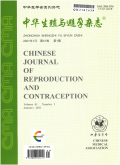冻融周期单囊胚移植临床结局的影响因素研究
Analysis of the factors influencing clinical outcome in single frozen-thawed blastocyst transfer cycles
摘要目的:分析在冻融单囊胚移植周期中影响临床结局的相关因素。方法:回顾性分析2011年1月至2018年4月期间于河南省人民医院生殖中心行冻融周期单囊胚移植患者的临床资料,分别比较囊胚体外发育时间、受精方式、囊胚形态学评分等参数对临床结局的影响,并采用二分类logistic回归分析筛选影响因素。结果:第5日(D5)囊胚组的生化妊娠率、临床妊娠率与活产率均显著高于第6日(D6)囊胚组( P<0.05),但两组间的异位妊娠率、流产率及早期流产率差异无统计学意义( P>0.05)。比较同等级别评分的D5/D6囊胚的临床结局,得到上述类似结果。体外受精(IVF)及卵胞质内单精子显微注射(ICSI)周期来源的囊胚,其临床结局差异无统计学意义( P>0.05)。比较不同扩张状态的D5囊胚,4期、5期较3期、6期囊胚的生化妊娠率、临床妊娠率及活产率高,早期流产率低,但差异均无统计学意义( P>0.05)。选取移植4期D5囊胚的患者进行比较,不同组间的生化妊娠率、临床妊娠率及活产率分别随内细胞团(ICM)、滋养层细胞(TE)评分的下降而降低,但差异均无统计学意义( P>0.05)。经logistic回归分析后,年龄、囊胚体外发育时间与临床妊娠率及活产率呈负相关,囊胚扩张状态与临床妊娠率呈正相关,囊胚ICM及TE评级与活产率呈负相关。 结论:患者的年龄、囊胚体外发育时间、囊胚质量是冻融单囊胚移植周期妊娠结局的影响因素。
更多相关知识
abstractsObjective:To investigate the factors influencing clinical outcome in single frozen-thawed blastocyst transfer cycles.Methods:The clinical data of 1748 frozen-thawed single blastocyst transfer cycles were studied retrospectively in Reproductive Medical Center of Henan Provincial People’s Hospital from January 2011 to April 2018. The effects of the development speed of blastocysts, the different fertilization methods and morphological scoring of blastocyst on the pregnancy outcome were observed. Clinical pregnancy rate, biochemical pregnancy rate, early abortion rate and live birth rate were compared among different groups. Logistic regression analysis was performed to determine the correlation between these parameters and clinical pregnancy rate and live birth rate.Results:The biochemical pregnancy rate, the clinical pregnancy rate and the live birth rate of day 5 (D5) frozen-thawed single blastocyst transfer were significantly higher than those of day 6 (D6) ( P<0.05), while the ectopic pregnancy rate, the abortion rate and the early abortion rate had no significant difference ( P>0.05). Coincident results were obtained by comparing the clinical outcomes of D5/D6 blastocysts with the same score. The clinical outcome of the blastocyst of different fertilization methods had no significant differences ( P>0.05). According to the status of blastocoele expansion and hatching, blastocysts were divided into stages 3-6. Compared with the stage 3 and stage 6 groups, the stage 4 and stage 5 groups of D5 frozen-thawed single blastocyst transfer showed a higher biochemical pregnancy rate, clinical pregnancy rate, live birth rate and a lower early abortion rate, but there were no statistically significant differences ( P>0.05). In the stage 4 group of D5 frozen-thawed single blastocyst transfer cycles, there was a tendency of lower biochemical pregnancy rate, clinical pregnancy rate and live birth rate with lower inner cell mass (ICM) or trophectoderm (TE) score but without statistically significant differences ( P>0.05). It was found that the age of patients and the development speed of blastocysts were negatively related to the clinical pregnancy rate and pregnancy live birth rate, while the degree of blastocoele expansion and hatching was positively related to the clinical pregnancy rate, and ICM and TE score were negatively related to the live birth rate. Conclusion:The age of patients, the development speed of blastocysts and blastocyst quality could be the factors influencing clinical outcome in single frozen-thawed blastocyst transfer cycles.
More相关知识
- 浏览327
- 被引11
- 下载179


相似文献
- 中文期刊
- 外文期刊
- 学位论文
- 会议论文



 换一批
换一批 换一批
换一批



